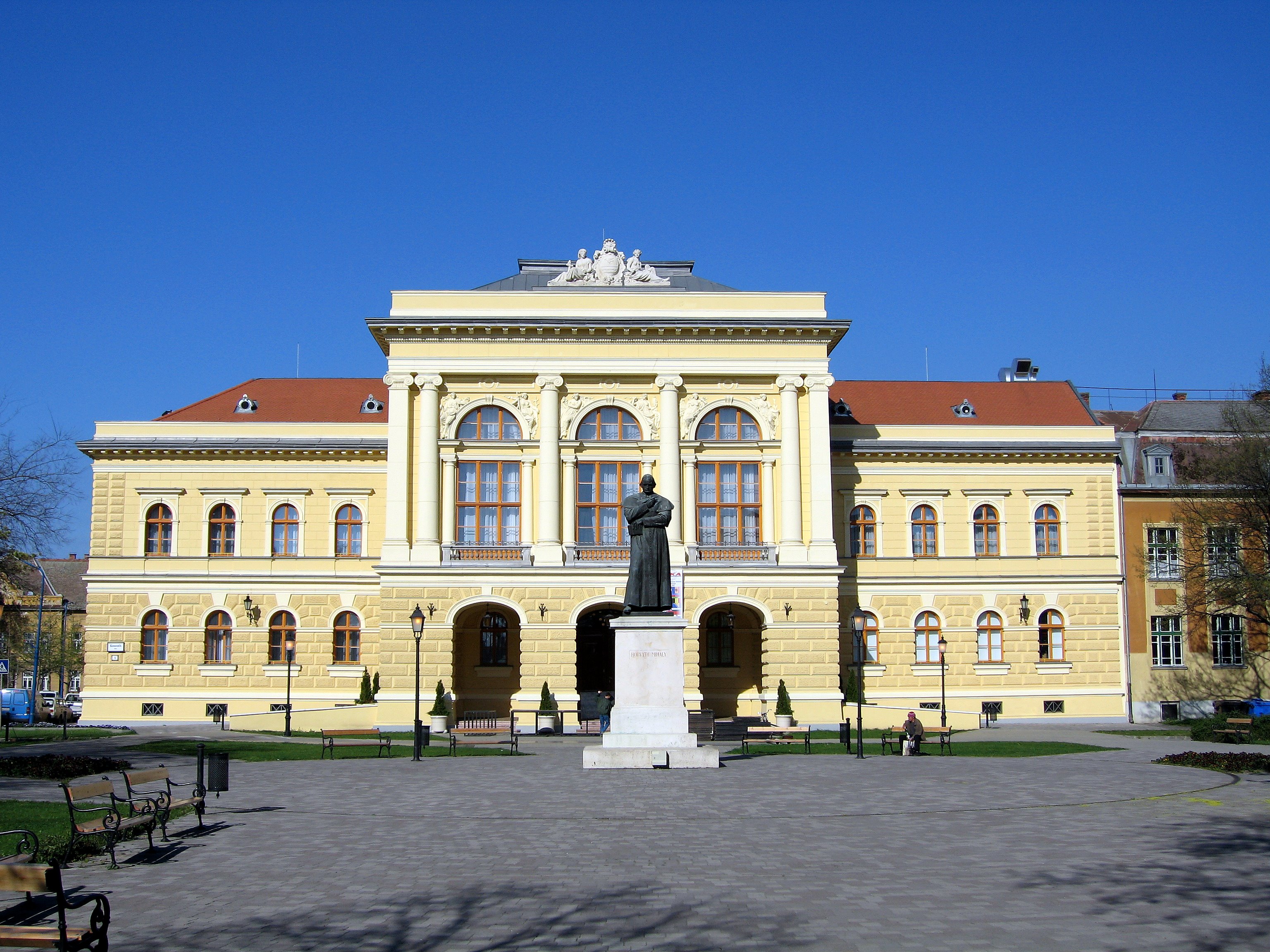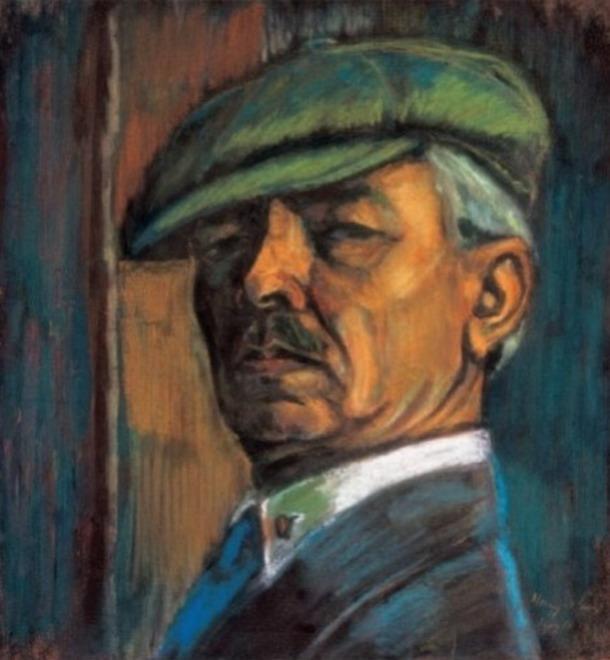|
József Koszta
József Koszta (27 March 1861 – 29 July 1949) was a Hungarian painter whose major works include ''Girl with Geraniums'', ''Corn Snappers'' and ''Woman Drying Plates''. Life Born on 27 March 1861, Koszta trained at various schools of art, including the Academy of Fine Arts in Munich, which he attended in 1891 on a scholarship, and the Master School of Gyula Benczúr. He studied under Károly Lotz and Bertalan Szekely. He became a member of the Szolnok Szolnok (; also known by other alternative names) is the county seat of Jász-Nagykun-Szolnok county in central Hungary. A city with county rights, it is located on the banks of the Tisza river, in the heart of the Great Hungarian Plain, wh ... Art Colony and worked largely in solitude on a farm he shared with landscape artist István Nagy for many years. Koszta's artistic vision began to emerge in the 1920s. Working in the realism school, he focused heavily on images depicting peasant life, utilizing strong tonal co ... [...More Info...] [...Related Items...] OR: [Wikipedia] [Google] [Baidu] |
Budapest
Budapest (, ; ) is the capital and most populous city of Hungary. It is the ninth-largest city in the European Union by population within city limits and the second-largest city on the Danube river; the city has an estimated population of 1,752,286 over a land area of about . Budapest, which is both a city and county, forms the centre of the Budapest metropolitan area, which has an area of and a population of 3,303,786; it is a primate city, constituting 33% of the population of Hungary. The history of Budapest began when an early Celtic settlement transformed into the Roman town of Aquincum, the capital of Lower Pannonia. The Hungarians arrived in the territory in the late 9th century, but the area was pillaged by the Mongols in 1241–42. Re-established Buda became one of the centres of Renaissance humanist culture by the 15th century. The Battle of Mohács, in 1526, was followed by nearly 150 years of Ottoman rule. After the reconquest of Buda in 1686, the ... [...More Info...] [...Related Items...] OR: [Wikipedia] [Google] [Baidu] |
Realism (arts)
Realism in the arts is generally the attempt to represent subject matter truthfully, without artificiality and avoiding speculative and supernatural elements. The term is often used interchangeably with naturalism, although these terms are not synonymous. Naturalism, as an idea relating to visual representation in Western art, seeks to depict objects with the least possible amount of distortion and is tied to the development of linear perspective and illusionism in Renaissance Europe. Realism, while predicated upon naturalistic representation and a departure from the idealization of earlier academic art, often refers to a specific art historical movement that originated in France in the aftermath of the French Revolution of 1848. With artists like Gustave Courbet capitalizing on the mundane, ugly or sordid, realism was motivated by the renewed interest in the common man and the rise of leftist politics. The Realist painters rejected Romanticism, which had come to dominate Fre ... [...More Info...] [...Related Items...] OR: [Wikipedia] [Google] [Baidu] |
Gyula Benczúr
Gyula Benczúr (28 January 1844, Nyíregyháza – 16 July 1920, Szécsény) was a Hungarian painter and art teacher. He specialized in portraits and historical scenes. Biography His family moved to Kassa when he was still very young and he displayed an early talent for drawing. He began his studies in 1861 with Hermann Anschutz and Johann Georg Hiltensperger (1806–1890). From 1865 to 1869, he studied with Karl von Piloty. He achieved international success in 1870 when he won the Hungarian national competition for historical painting with his depiction of King Stephen's baptism. He then assisted Piloty with the frescoes at the Maximilianeum and the Rathaus in Munich and illustrated books by the great German writer, Friedrich Schiller. King Ludwig II of Bavaria gave him several commissions. He was named a Professor at the Academy of Fine Arts, Munich, in 1875. Soon after, he built a home in Ambach on Lake Starnberg; designed by his brother Béla. In 1883, he returned to Hu ... [...More Info...] [...Related Items...] OR: [Wikipedia] [Google] [Baidu] |
Károly Lotz
Lotz Károly Antal Pál, or Karl Anton Paul Lotz (16 December 1833 – 13 October 1904) was a German- Hungarian painter. Career Karl Lotz was born in Bad Homburg vor der Höhe, Germany, the 7th and youngest surviving child of Wilhelm Christian Lotz and Antonia Höfflick (Höfflich). His father was a valet of Prince Gustav zu Hessen-Homburg at the time when the prince was representing Austria at the Congress of Vienna, which among other matters dealt with the House of Hessen-Homburg's rights of sovereignty over Hessen-Darmstadt. The sudden death of the young Baron von Sinclair, chargé d'affaires, forced W. C. Lotz temporarily into the rôle. While in Hungary in 1815 he made the acquaintance of the 13-year-old Antonie Hoefflich, whom he married three years later. She gave birth to 8 children, of whom Karl was the youngest. W. C. Lotz died in 1837 and Antonie moved the family to Pest (now one of the three constituent parts of Budapest; the one on the east bank of the Rive ... [...More Info...] [...Related Items...] OR: [Wikipedia] [Google] [Baidu] |
Bertalan Székely
Bertalan Székely (8 May 1835, Kolozsvár, Transylvania, Kingdom of Hungary (Now Cluj-Napoca after annexation by Romania following the Treaty of Trianon – 21 August 1910, Budapest) was a Hungarian history and portrait painter who worked in the Romantic and Academic styles. Biography Born into a family that was originally part of the Transylvanian nobility, his father was a court clerk. Although his family wanted him to become an engineer, he studied at the Academy of Fine Arts, Vienna from 1851 to 1855, under Johann Nepomuk Geiger and Carl Rahl.Brief biography @ the Magyar Életrajzi Lexikon. He then returned to his hometown where, for the next three years, he worked as an art teacher. After a year of employment with Count Aichelburg in [...More Info...] [...Related Items...] OR: [Wikipedia] [Google] [Baidu] |
Szolnok
Szolnok (; also known by other alternative names) is the county seat of Jász-Nagykun-Szolnok county in central Hungary. A city with county rights, it is located on the banks of the Tisza river, in the heart of the Great Hungarian Plain, which has made it an important cultural and economic crossroads for centuries. Szolnok also has one of Hungary’s best waterpolo teams. Name and etymology Szolnok was named for the first steward of the city, Szaunik or Zounok. The town was first officially mentioned under the name Zounok in 1075. In the following centuries, it was recorded as Zounok, Saunic, Zounuc, and Zawnuch. The variety of spellings likely comes from phonetic discrepancies occurring when Hungarian sounds - originally written in runic Old Hungarian script - were recorded using the Latin alphabet. Another possibility revolves around speculation that the name Szaunik was not a personal name after all, but rather a title relating to the significant salt trade (salt, hu, s ... [...More Info...] [...Related Items...] OR: [Wikipedia] [Google] [Baidu] |
István Nagy (painter)
István Nagy (28 March 1873 – 13 February 1937) was a Hungarian artist who specialized in landscapes and figure painting. Biography A native of Csíkmindszent, Harghita County, Romania, he was born into a land-owning family. Rather than take up agricultural pursuits, he attended the teacher training college in Kolozsvár and taught in Homokmégy.Biography @ Őrőkségűnk (Heritage). One of his courses involved drawing in charcoal. Discovering that he had artistic talent, and encouraged by , he went to study at the |
1861 Births
Statistically, this year is considered the end of the whale oil industry and (in replacement) the beginning of the petroleum oil industry. Events January–March * January 1 ** Benito Juárez captures Mexico City. ** The first steam-powered carousel is recorded, in Bolton, England. * January 2 – Friedrich Wilhelm IV of Prussia dies, and is succeeded by Wilhelm I. * January 3 – American Civil War: Delaware votes not to secede from the Union. * January 9 – American Civil War: Mississippi becomes the second state to secede from the Union. * January 10 – American Civil War: Florida secedes from the Union. * January 11 – American Civil War: Alabama secedes from the Union. * January 12 – American Civil War: Major Robert Anderson sends dispatches to Washington. * January 19 – American Civil War: Georgia secedes from the Union. * January 21 – American Civil War: Jefferson Davis resigns from the United States Senate. * January 26 ... [...More Info...] [...Related Items...] OR: [Wikipedia] [Google] [Baidu] |
1949 Deaths
Events January * January 1 – A United Nations-sponsored ceasefire brings an end to the Indo-Pakistani War of 1947. The war results in a stalemate and the division of Kashmir, which still continues as of 2022. * January 2 – Luis Muñoz Marín becomes the first democratically elected Governor of Puerto Rico. * January 11 – The first "networked" television broadcasts take place, as KDKA-TV in Pittsburgh, Pennsylvania goes on the air, connecting east coast and mid-west programming in the United States. * January 16 – Şemsettin Günaltay forms the new government of Turkey. It is the 18th government, last single party government of the Republican People's Party. * January 17 – The first VW Type 1 to arrive in the United States, a 1948 model, is brought to New York by Dutch businessman Ben Pon. Unable to interest dealers or importers in the Volkswagen, Pon sells the sample car to pay his travel expenses. Only two 1949 models are sold in America tha ... [...More Info...] [...Related Items...] OR: [Wikipedia] [Google] [Baidu] |
People From Brașov
A person ( : people) is a being that has certain capacities or attributes such as reason, morality, consciousness or self-consciousness, and being a part of a culturally established form of social relations such as kinship, ownership of property, or legal responsibility. The defining features of personhood and, consequently, what makes a person count as a person, differ widely among cultures and contexts. In addition to the question of personhood, of what makes a being count as a person to begin with, there are further questions about personal identity and self: both about what makes any particular person that particular person instead of another, and about what makes a person at one time the same person as they were or will be at another time despite any intervening changes. The plural form "people" is often used to refer to an entire nation or ethnic group (as in "a people"), and this was the original meaning of the word; it subsequently acquired its use as a plural form of per ... [...More Info...] [...Related Items...] OR: [Wikipedia] [Google] [Baidu] |










_1938.jpg)